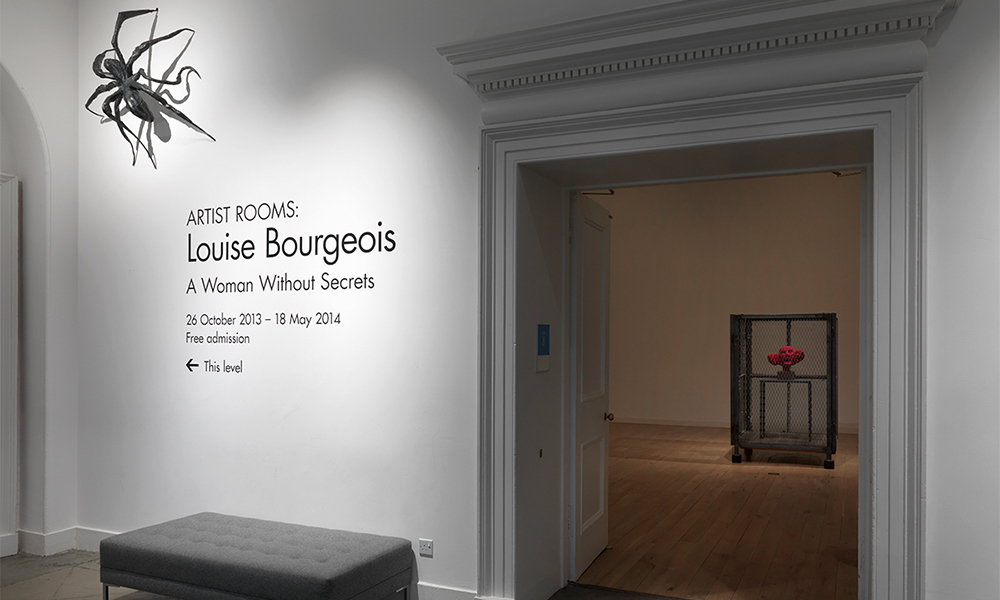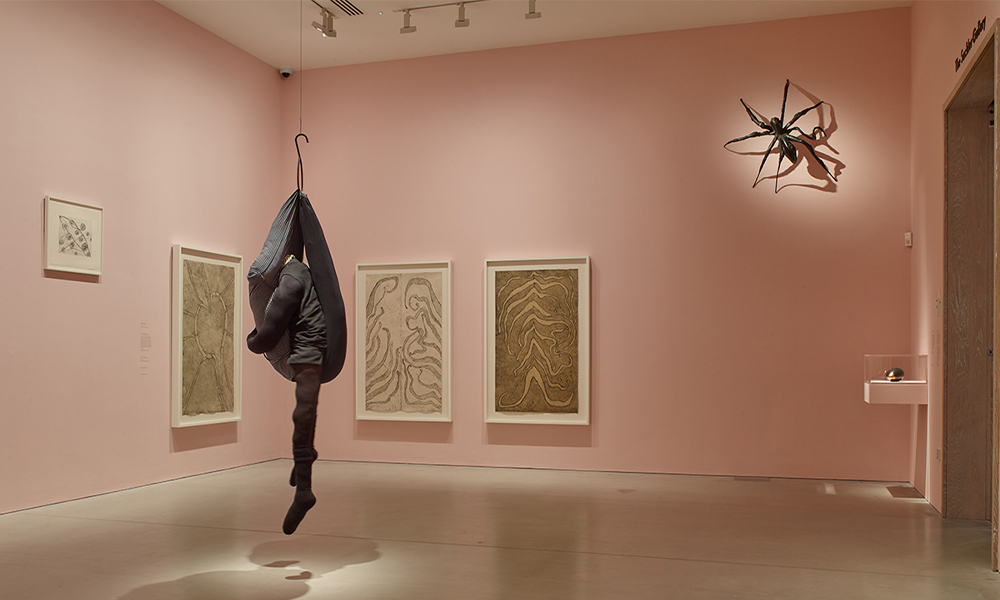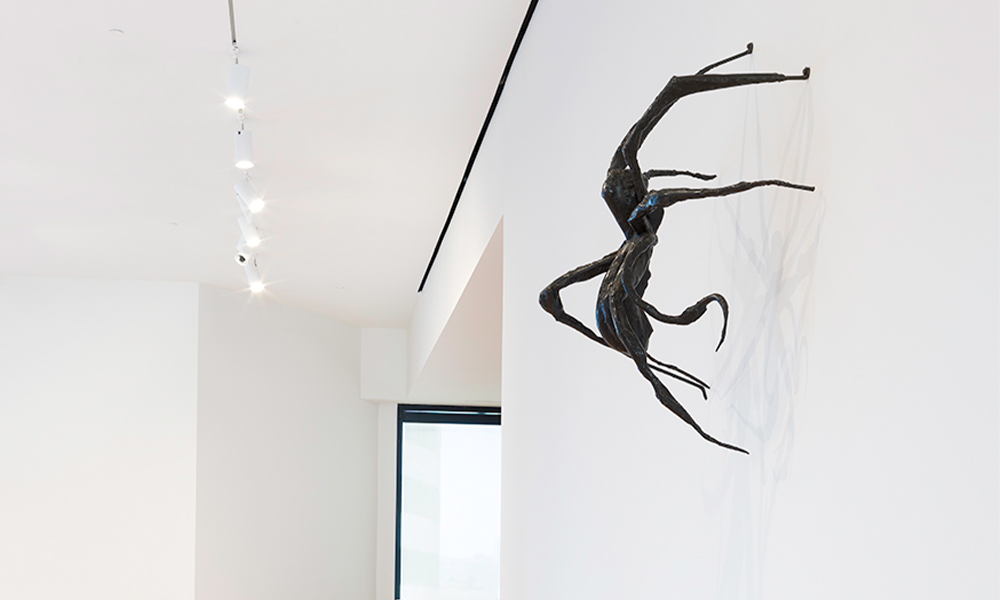Our new series ‘Icons’ presents extraordinary masterpieces from celebrated 20th-Century artists and groundbreaking creations direct from the studios of leading contemporary artists.

Louise Bourgeois’s commanding spider sculptures are among the most iconic works of the past century. First depicted in a 1947 ink and charcoal drawing, this motif evolved into a prevailing theme in her sculpture by the mid-1990s, with ‘Spider I’ (1995) standing as a quintessential early example.
1 / 2
Louise Bourgeois
Spider I
- 1995
- Bronze, dark and polished patina
- Ed. 4/6 + 1 AP
- 127 x 116.8 x 31.1 cm / 50 x 46 x 12 1/4 in
From the outset of her career, Bourgeois investigated the tension between architectural and organic forms, a recurrent theme that is especially pronounced in her compelling series of six renowned wall spiders.
‘Spider I’ is one example of these wall-mounted sculptures. Editions of this piece have been exhibited widely and are also in museum collections worldwide, including the San Francisco Museum of Modern Art, Kemper Museum of Contemporary Art, and ARTIST ROOMS, managed by Tate and the National Galleries of Scotland, UK.
Excerpt from ‘Louise Bourgeois: The Spider, the Mistress, and the Tangerine,’ A Film by Marion Cajori and Amei Wallach © Art Kaleidoscope Foundation, New York NY, 2008
The spider is an ode to Bourgeois’s mother, a tapestry weaver who passed away when the artist was just 20. The spider’s duality—its role as both predator and protector and its capacity to destroy and create—reflects the complexities of motherhood as Bourgeois experienced them.
‘The spider—why the spider? Because my best friend was my mother and she was deliberate, clever, patient, soothing, reasonable, dainty, subtle, indispensable, neat, and as useful as a spider … I shall never tire of representing her.’ [1]
Louise Bourgeois
Dynamically poised, ‘Spider I’ radiates both vulnerability and strength. Its watchful stance is that of a creature perpetually on edge, ready to either confront or retreat, and its tensed, curled leg reflects a visual tension, reflecting the inner emotional turmoil Bourgeois confronted.
‘Louise Bourgeois: I have been to hell and back. And let me tell you, it was wonderful,’ the artist’s largest solo exhibition in Japan to date, opens on 25 September 2024 at Mori Art Museum in Tokyo, Japan.

About the artist
Born in France in 1911, and working in America from 1938 until her death in 2010, Louise Bourgeois is recognized as one of the most important and influential artists of the 20th Century. For over seven decades, Bourgeois’s creative process was fueled by an introspective reality, often rooted in cathartic re-visitations of early childhood trauma and frank examinations of female sexuality. Articulated by recurrent motifs (including body parts, houses and spiders), personal symbolism and psychological release, the conceptual and stylistic complexity of Bourgeois’s oeuvre—employing a variety of genres, media and materials—plays upon the powers of association, memory, fantasy and fear.
[1] Translated excerpt from Louise Bourgeois, ‘Ode à Ma Mère,’ Paris/FR: Solstice Publishing, 1995
Portraits: Louise Bourgeois and two of her spider sculptures (in progress) in her Brooklyn studio, New York, 1995. Photo: Jean-François Jaussaud, Art: © The Easton Foundation/VAGA at ARS, NY; Louise Bourgeois in her Brooklyn studio, New York, 1993. Photo: © Philipp Hugues Bonan. Courtesy The Easton Foundation



